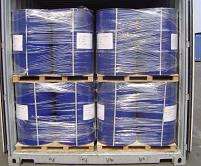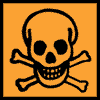Product show
Ethylene Dibromide (EDB)
Identification
Synonyms: 1,2-dibromoethane (IUPAC); 1,2-dibromoethane; DBE; glycol bromide; Bromofume; 'Dowfume' (Dow AgroSciences). Discontinued products 'Celmide' (Excel).
CAS No.: 106-93-4 EC No.: 203-444-5 RTECS No.: KH9275000
Molecular Weight: 187.8612
Molecular Formula: C2H4Br2
Structural Formula: BrCH2CH2Br
M.p.: 9.3 deg.C
B.p.: 131.5 deg. C
F.p.:Non-flammable
Physical Form in normal condition: Colourless liquid.
V.p.: 1.5 kPa (25 °C); 5.2 kPa (48 °C)
Kow: logP = 1.76 (Agchem. Desk Ref.)
S.g./density: 2.172 (25 °C)
Solubility: In water 4.3 g/kg (30 °C).Soluble in diethyl ether, ethanol and most common organic solvents.
Stability: Decomposed by alkalis and by light.
Application
Ethylene dibromide (EDB) is used as intermediate in organic synthesis, for example to manufacture herbicide DIQUAT, also applied as soil fumigant to treat nematode (known as nematocide), wireworms, and other soil pests. Normally it can be fomulated with chloropicrin to improve efficiency. EC grade is also applied.
Specification
Ethylene dibromide (EDB) content: 99.0% min.
Water: 0.1% max.
pH: 6.0~8.0
Appearance: colorless transparent liquid
EC grade will be available soon
Standard Packaging
43kg per 20L Jerry can; 250kg per plastic 200L drum; on pallet

Risks and Safety Information
Acute oral LD50 for rats 146–420 mg/kg. Skin and eye contact, may cause severe burning. LC50 (48 h) for sheepshead minnows 4.8 mg/l (EHC).
Ethylene Dibromide (EDB) is regulated by UN as hazardous substance.
Danger! Toxic, dangerous for environment
UN 1605;
Class: 6.1;
PG I
(Note: EDB is a restricted chemical by Rotterdam Convention, users should be aware of state/local regulations limit on certain applications)

